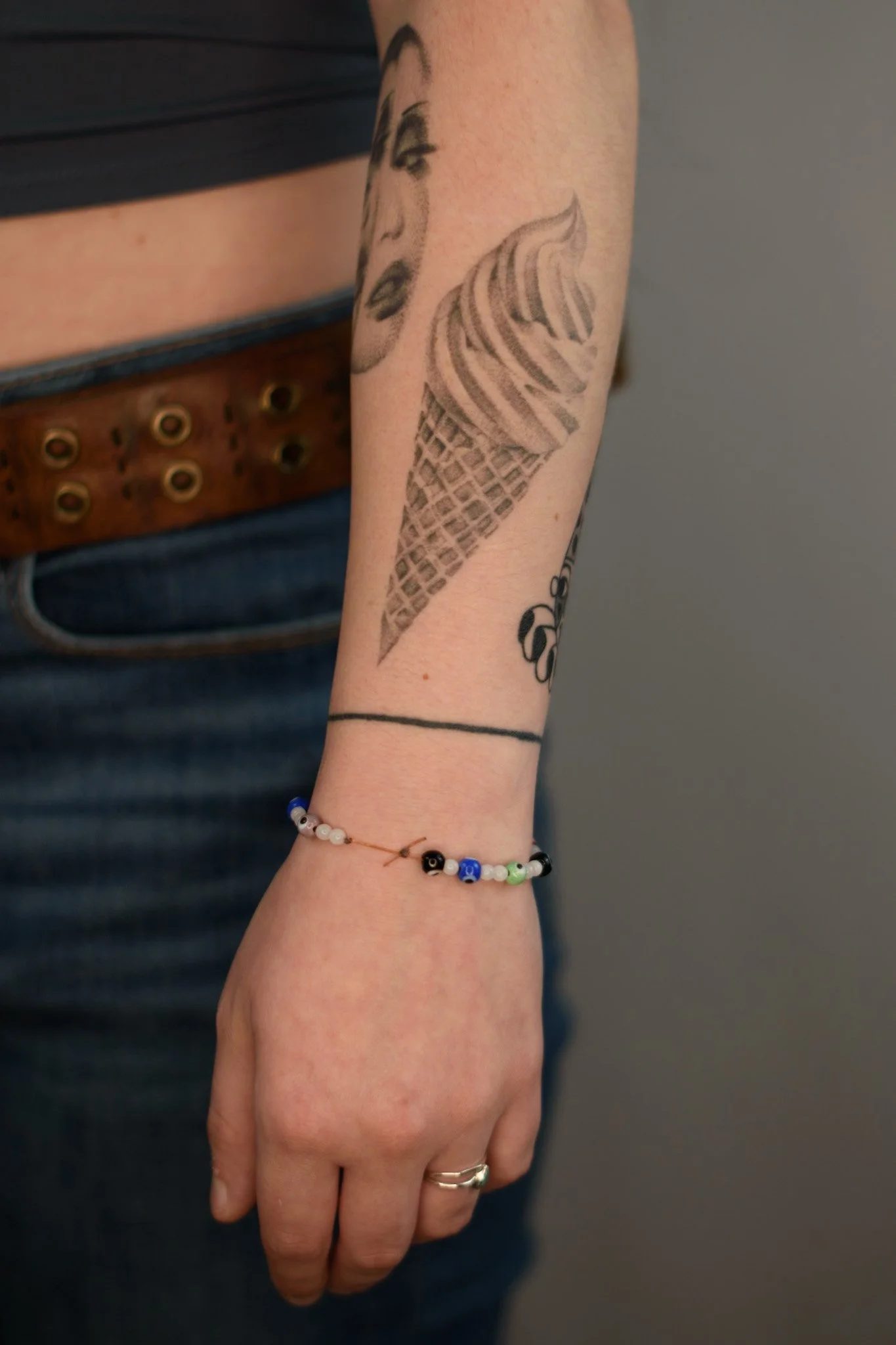Tattoo Preparation
-
Begin moisturizing your preferred placement location(s) at least 1 week before your appointment.
2 weeks is better, but if you can't remember, even 1 week of strict moisturizing will make a huge difference in the outcome of your tattoo.
-
Exfoliate the area you'll be getting tattooed. A smoother skin surface to work on makes it easier to apply the ink evenly and lead to crispier lines and smoother shading.
-
Make sure you stay hydrated the week of your appointment. Hydration plays a key role in your tattoo application process and how well your tattoo will turn out.
-
If you accidentally cut yourself, we won't be able to tattoo in that area. The area being tattooed should be free of cuts, bruises, and scrapes.
-
On the day of your appointment:
Bring a water bottle and a packaged snack
Wear dark, comfortable clothing that allows easy access to your preferred placement location.
Ink and the carbon from tattoo stencils will potentially stain clothing permanently.
Arrive on time! Please don't enter the studio early and be sure to bring your N95 mask, ID, and a form of payment.
-
Remove as much of the tanner from your preferred location as possible before your appointment.
Tattoo Aftercare
-
Unless you have a sensitivity to medical adhesives, you'll go home with a clear bandage commonly referred to as, "Second Skin", "Derm-Shield", or "Saniderm".
Leave that bandage on for 3 days unless:
You notice signs of infection (swelling, redness, bumpy rash, warm to touch, fever, and chills)
The bandage peels and exposes thee tattoo
You notice a red rash around the perimeter of the bandage (this could be a reaction to the adhesive!)
Please contact your doctor and tattoo artist if you notice signs of infection.
Do not pierce, pop, or reapply the bandage.
Since the bandage is waterproof, you can normally, but avoid any soaking.
-
Wash your hands! You should never touch your tattoo with dirty hands.
To remove your bandage, gently peel off the corners under running warm water.
Pull the bandage off in the direction of your hair growth and similar to taking off a Command Strip.
Immediately clean your tattoo
Notes: Plasma, ink, and blood may accumulate under the bandage. This is normal and often called an "ink sack".
-
After taking the adhesive bandage off, you'll need to clean your tattoo 2-3x per day while it's healing.
Wash your hands! You should never touch your tattoo with dirty hands.
Apply an unscented, dye-free soap and massage in a gentle, circular motion. Remove any old plasma, ink, and blood. Do not use any sort of loofah, wash cloth, or exfoliant. I use antibacterial soap, but that isn't absolutely necessary.
Pat dry with a clean paper towel. Body/Hair towels can harbor bacteria and using them on your fresh tattoo may lead to a higher risk of infection.
Don't recover your tattoo. Instead, apply a thin layer of unscented tattoo ointment to the tattoo. Petroleum-based products are not recommended as they have been known to cause fading, they don't let your tattoo breath, and they can lead to a higher chance of infection.
Note: Avoid wearing tight, restrictive clothing and ensure any fabric that touches your tattoo is clean! Treat your tattoo like an open wound because it is one.
-
After your tattoo starts to flake or peel, continue to wash your tattoo 2X a day.
You can begin using a fragrance-free, dye-free lotion or continue to use tattoo balms as directed.
During this stage, your tattoo may itch. Don't scratch or peel your tattoo, as this can ruin your ink and lead to higher risks of infection.
Note: Moisturizing your tattoo and avoiding sun exposure is the KEY to long-lasting, vibrant ink. However, over-moisturizing your tattoo can pull out your ink. Use at maximum, a dime-sized amount for palm sized pieces.
-
Sun Exposure. While your tattoo is fresh AND healed, the sun is your enemy. Keep your fresh tattoo out of the sun and make sure to apply SPF sunscreen whenever it's healed.
Over-moisturizing. Using too much moisturizer can lead to ink fallout and a greater risk of infection.
Soaking. Avoid soaking in any water until your tattoo is healed (baths, hot tubs, pools, lakes, etc). This will increase your risk of infection.
Restrictive Clothing. Tight clothing can irritate the tattoo, leading to a higher risk of infection.
Improper aftercare. Avoid using other artist's aftercare instructions. It is your responsibility to care for your tattoo after you leave the studio and that includes following proper aftercare instructions. Know that any deviations could lead to an infection, poor healing, and ink that doesn't last as long as it should. If you have any questions, you can text me at (833) 250-6319 or email me at theeveningaurora@gmail.com.
-
Tattoo infections are rare, but it helps to know what to look for. Signs of infection include:
Fever
Green/Yellow oozing or scabbing
Warm to touch
Hard and raised tissue at the tattoo site
Red lesions
Swelling that lasts more than a week
Fire-y red streaks
Any funky smells
Please contact your doctor and tattoo artist if you notice any of these signs.
If you think you're paranoid about your tattoo getting infected, you can use an unscented, dye-free anti-bacterial soap during the healing process and be sure not to over-moisturize.

